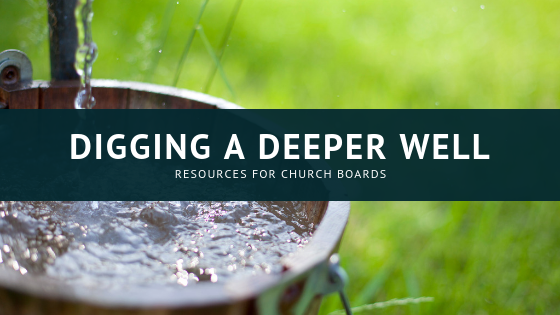In the 21st Chapter of John, after post-Easter Jesus cooks breakfast for the disciples (while coaching them from the shore to re-rig their boats following a long, frustrating night of fruitless fishing), he turns to Peter and asks him three times: “Do you love me?” And as Peter answers affirmatively, Jesus directs him to “Feed my sheep.”
Interestingly, there is no mention of building a “machine” to accomplish Jesus’ directions. Jesus does not say to Peter: “Feeding this many sheep will require a task force to identify who needs to get fed and with what.” His command is simple, direct, self-contained, and urgent.
How much of your congregation’s activities and announcements are essentially “asks” for people to feed your church machine?
What is the ratio of time and energy spent to keep the infrastructure of the church—committees, volunteer activities—up and running?
And is it working? Is anyone standing in line behind current volunteers to take over those jobs? If the answer is no—and that is the answer in most congregations large and small—then what conversation does your church board need to have?
* * * * *
All four gospels give an account of “Feeding the Five Thousand.” Luke 9:10-17 records it this way:
10 On their return the apostles told Jesus all they had done. He took them with him and withdrew privately to a city called Bethsaida. 11 When the crowds found out about it, they followed him; and he welcomed them, and spoke to them about the kingdom of God, and healed those who needed to be cured.
12 The day was drawing to a close, and the twelve came to him and said, “Send the crowd away, so that they may go into the surrounding villages and countryside, to lodge and get provisions; for we are here in a deserted place.” 13 But he said to them, “You give them something to eat.” They said, “We have no more than five loaves and two fish—unless we are to go and buy food for all these people.” 14 For there were about five thousand men. And he said to his disciples, “Make them sit down in groups of about fifty each.” 15 They did so and made them all sit down. 16 And taking the five loaves and the two fish, he looked up to heaven, and blessed and broke them, and gave them to the disciples to set before the crowd. 17 And all ate and were filled. What was left over was gathered up, twelve baskets of broken pieces.
The disciples suggested to Jesus: Send the crowd away so they can get something to eat.
Jesus said: You give them something to eat.
The imperative for church boards to stop focusing on ‘feeding the machine’ does not mean abdicating responsibility or eschewing organization. In fact, in Luke’s gospel, Jesus instructs the disciples to organize the large crowd into smaller groups of fifty each. He takes the five loaves and two fishes—presumably a result of a quick canvass of resources—and prays over them. There is organization and there is activity.
Notice, however: organization and activity is not why the crowd swelled so large in the first place. The crowd pursued Jesus because accounts of Jesus’ work were spreading. They were there because Jesus spoke words that filled them. Jesus healed them. Jesus proclaimed the Kingdom of God in its fullness and power.
Likewise, in John 21, Jesus feeds the disciples. He provides for them (he is already cooking fish before their big catch even comes ashore) and then he blesses them and charges them to look out—and feed people to fill their deepest needs.
Who or what are we feeding in our church work? We know that efforts to feed the machine are not working in a vast number of congregations.
Why not try a very different approach?
* * * * *
In a singularly memorable line—and poem—American poet Sandra Alcosser (b. 1944) writes of “a fish to feed all hunger.”
A Fish to Feed All Hunger
by Sandra Alcosser
On the porch like night peelings,
bags of red hackles.
The fisherman is dressing,
capes of moose mane around him.
In his vise, he wraps the waist
of a minnow with chenille.
We wade downstream. I am barefoot.
The fisherman stands, thigh deep,
seining insects. Perhaps today
in this blizzard of cottonwood
it is the caddis that rises,
after a year in mud, from larva
to phoenix in four seconds.
The fisherman ties an imitator
of hare’s mask and mallard breast.
He washes his hands in anisette,
then casts back, a false cast,
watching the insects legs
break the water.
I line the creel with hay and mint
and lay in six pale trout. There is a pink
line that runs the length of a rainbow’s
belly more delicate than an inner ear.
It makes the whole basket quiver.
The fisherman does not ask why I come.
I have neither rod nor permit.
But I see him watch me afternoons as I bend
to brush down my rooster-colored hair.
He understands a fish to feed all hunger.
And the lure is the same.
- What do the many particulars in this poem (hackles, moose mane, minnow, chenille, hare’s mask, hay, mint, pink line, rooster-colored hair) add to its meaning, in your experience of it?
- What do you make of the final stanza? What, exactly, does the fisherman understand about the poet?
- What is your church board fishing for?
- Is the “catch” of your fishing feeding people’s spiritual and material needs—or feeding your congregation’s “machine”?








No Comments